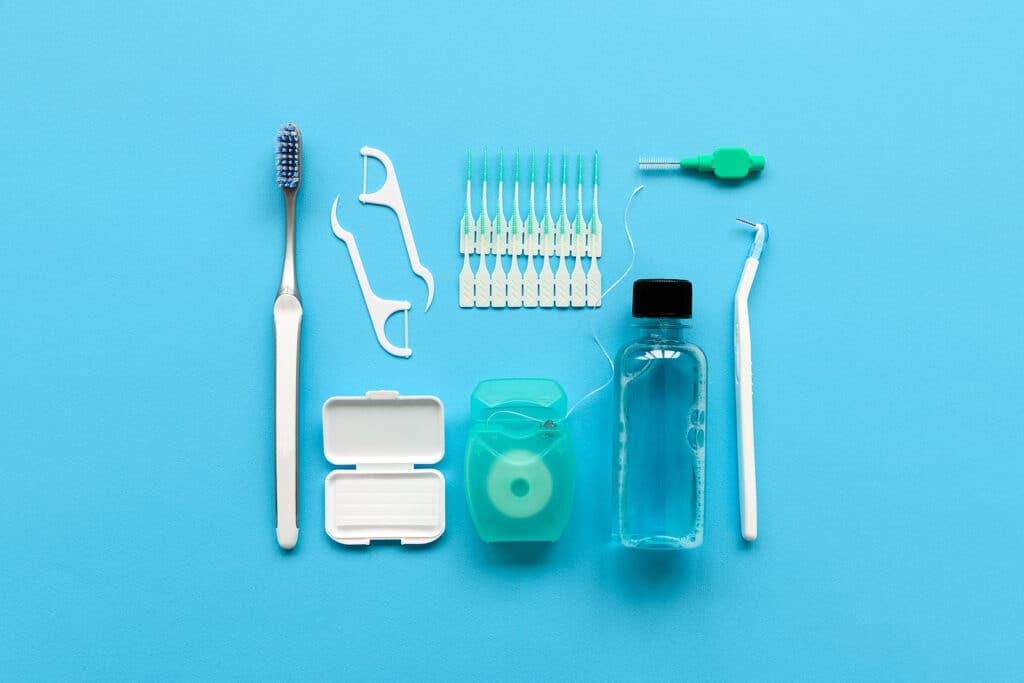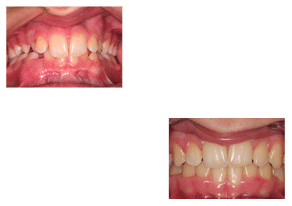Are you currently undergoing orthodontic treatment and looking for ways to maintain optimal oral hygiene? Flossing is an essential part of keeping your teeth and gums healthy, especially when you have braces. However, it can be a bit challenging to floss with braces effectively. In this blog post, we will share four awesome flossing tips to help you navigate the world of flossing with braces. At Monmouth-Ocean Orthodontics, your trusted orthodontist in Ocean Township, NJ, we understand the importance of proper oral care during orthodontic treatment. Let's dive into these helpful tips!
Learning How to Floss with Braces
You may be an expert with floss and dental hygiene already, but adding braces is like putting a roadblock up for you. You have to navigate the archwire and use caution around the brackets. That takes a bit of time to get used to. Our first tip is to allow yourself extra time to floss, especially for the first few days.
The doctor affixed small brackets to your teeth, then attached an archwire through each bracket. The tension on the wire is what moves your teeth into alignment. This method has been in use for many centuries, although there have been many improvements in the last 50 years that make braces more comfortable, effective, and less noticeable.
One thing that hasn't changed is the need for continued oral hygiene during treatment. Braces design creates some challenges because you have to work around the wire and brackets to keep your teeth clean. Using a couple of special tools will make that much easier.
Handy Tools
Modern orthodontics has created several helpful tools that make it easier to floss with braces.
Floss Threaders: This thin tool works much like your grandma's needle threading tool for sewing. The dental floss is passed through the "eye" of the floss threader. The device is then threaded between your teeth and the archwire, pulling the end of the floss with it.
Interproximal Brushes: These tiny brushes are also called interdental brushes. They are not a substitute for floss but can be used to clean the area around your brackets under the wire.
Water Flossing Devices: They are great with braces if you already use a water flossing device. It would help if you also used regular dental floss at least once daily in addition to flossing with water.
Orthodontic Flossing Tool: These are handy little devices with a piece of dental floss stretched between two arms. The orthodontic tools have one skinny arm and a thicker arm and are designed for use with braces.
Easy Ways to Floss with Braces
Once you become accustomed to flossing with your braces, you will be able to floss easily. At first, it may take some practice, so be sure to allow extra time during your oral care routine.
You may use one or more different tools to help with flossing.
We recommend trying out different methods and determining which works best for you, especially if you are undergoing orthodontic treatments like Invisalign & braces for adults.
Manually Threading the Floss
Manually threading dental floss between the archwire and your teeth is always an option. Some people find it difficult due to the flimsy nature of dental floss. To use this method:
- Start with a moderate length of dental floss (12 to 18 inches).
- Carefully thread the floss between your teeth and the archwire.
- Use the floss in your usual manner to floss between the teeth, being sure to go to the gumline.
- Carefully remove the floss and proceed to the next tooth.
- Repeat until finished with all your teeth, both upper and lower.
This method does work better with dental tape or waxed dental floss, which are a bit stiffer than unwaxed floss.
Using a Floss Threader
If you have difficulty guiding the floss between your teeth and the archwire, a floss threader may help. Floss threaders provide a small, stiff tool that easily slips between teeth and wire to guide your floss effortlessly. To floss with a floss threader:
- Begin with 18 to 24 inches of floss.
- Thread one end through the eye of the floss threader, allowing for a 5 to 8-inch overlap.
- Guide the threader under the archwire and pull the floss through, removing the threader while leaving the floss in place.
- Floss using your usual technique.
- Repeat until you have cleaned between all your teeth.
This video from DenTek displays how to use floss threaders:
Using an Orthodontic Flossing Tool
Orthodontic flossing tools are U-shaped devices with a handle. Floss is attached to the U-shaped portion of the device, and one side of the U is thin enough to fit between the archwire and your teeth. These tools are convenient when you can't use regular floss, but they have some limitations.
Using a Water Flossing Device
Using a water flossing device is quick and easy but not very portable. If you have one of these at home, there is no problem using it. However, if you need to floss at school or work, you will need to rely on other methods. To use a water flosser:
- Fill the reservoir with lukewarm water. Mouthwash may be added but is not necessary.
- Install the tip and test the water pressure in the sink.
- Leaning over the sink, insert the tip into your mouth, closing your lips lightly around the stem.
- Turn on the machine and gently guide the water stream around your teeth and gums, making sure to reach all areas.
- Allow water to dribble out of your mouth as you work around the four quadrants.
Although water flossing devices are effective, it is recommended that you also use regular floss at least once daily.
Will It Always Take so Long to Floss with Braces?
No. With practice, you will become very efficient at flossing with braces.
The Importance of Daily Flossing
You have heard about the importance of daily flossing from a very young age. When you have braces, flossing becomes even more critical. The biggest drawback of having braces is that the hardware creates nooks and crannies around the brackets and wires where food can hide.
Food particles can create bacteria if left on teeth, causing tooth decay and possibly gum disease. That is why, with braces, you should concentrate even more on brushing and flossing. Learning how to floss with braces means that your smile will be straight and beautiful when your treatment is complete.
Monmouth-Ocean Orthodontics Cares
Mastering the art of flossing with braces is vital for maintaining excellent oral health and achieving the best results during your orthodontic journey. At Monmouth-Ocean Orthodontics, we are here to support and guide you every step of the way. If you have questions or need personalized advice on flossing techniques or orthodontic care, don't hesitate to contact us. Your beautiful and confident smile is our top priority, and we look forward to assisting you on your path to oral health success. Contact us today to schedule an appointment and take the next step toward a dazzling smile!
You may request a consultation using our Online Request or call the office at (732) 531-4700.
We look forward to hearing from you!






